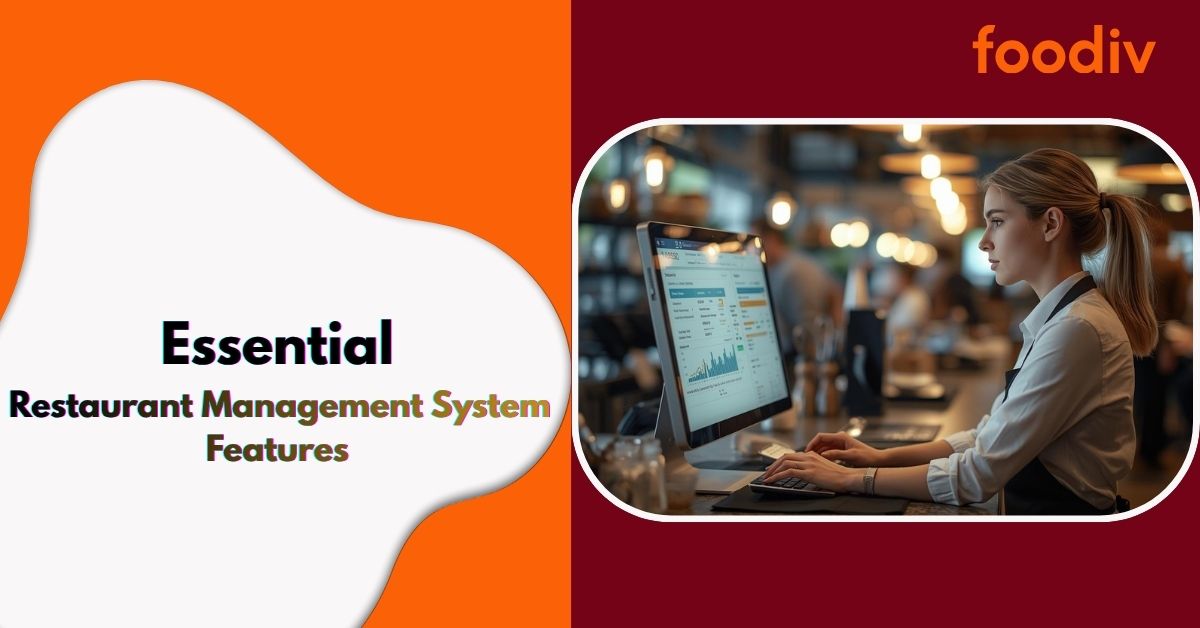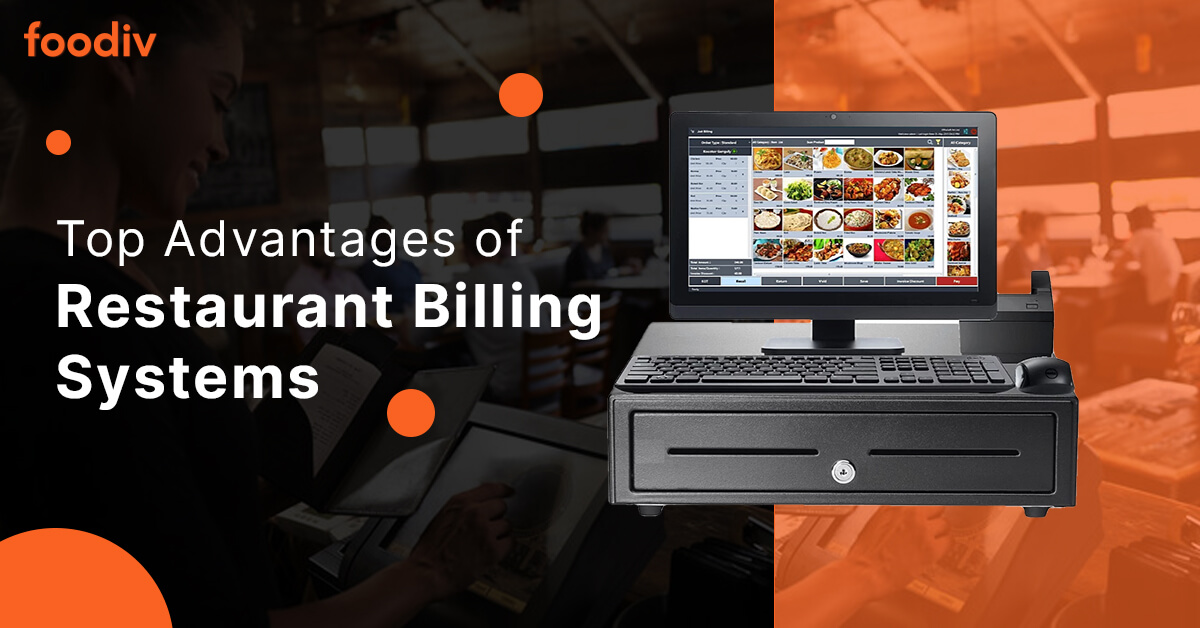
Running a restaurant today is more demanding than ever. Customers expect faster service, accurate orders, and a smooth dining experience. At the same time, owners must manage staff, track inventory, handle online orders, and keep costs under control. These tasks pile up fast. Even small mistakes can lead to delays, waste, or unhappy guests. As restaurants grow or add new sales channels, daily operations become even harder to manage without the right tools.
What is a Restaurant Management System (RMS)?
A Restaurant Management System is software that helps you manage your daily operations in one place. It brings together key functions such as order taking, payment handling, inventory control, staff scheduling, and reporting. Instead of switching between different tools, you get a central system that keeps everything organized. An RMS also reduces manual work by automating routine tasks. This means you spend less time fixing problems and more time focusing on your customers.
How an RMS enhances efficiency, accuracy, and profitability
A strong RMS helps your team work faster and with fewer errors. Orders move from the table or counter to the kitchen without confusion. Inventory updates as items sell, so you always know what is running low. Staff schedules become easier to manage and track. Clear reports show your best-selling items, busiest hours, and overall performance. When operations run smoothly, you cut waste and improve service. This leads to better profit margins and a stronger customer experience.
Core Features Every Restaurant Management System Should Include
Modern restaurants rely on many moving parts. A strong management system brings these parts together so your team can work faster and more accurately. The right features help reduce errors, improve service, and keep your business running smoothly every day.
1. Point-of-Sale (POS) System Integration
A POS system is the heart of restaurant operations. It handles orders, payments, and transactions in real time. When your POS connects with your management system, your staff can move faster and avoid errors. Order processing becomes smooth because each order goes straight to the kitchen without confusion. Table-side ordering helps servers take orders on handheld devices, which cuts wait times and reduces mistakes. Offline support lets the system keep running even when the internet drops. This helps you avoid service delays. Multi-location syncing is helpful if you manage more than one outlet. It allows you to track sales, menus, and performance across all stores in one place. When everything links back to the POS, your restaurant works as a single, efficient unit.
2. Inventory and Stock Management
Inventory management is one of the biggest challenges for restaurants. An effective system keeps you updated on stock levels as items sell. Real-time stock updates show what is available at any moment. This helps prevent missed orders or menu items running out unexpectedly. Low-stock alerts notify you when ingredients are getting close to empty so you can reorder in time. Ingredient-level tracking gives you a clearer view of what goes into each dish. This reduces waste and helps you plan better. Waste and variance reports show the gap between expected and actual usage. This helps you find problems like over-portioning, theft, or spoilage. With strong inventory tools, you save money and protect your profit margins.
3. Menu Management and Configuration
Restaurants often need to make quick changes to their menus. A good management system lets you update your digital menu with ease. You can adjust prices, add new items, or remove dishes that are out of stock. Promotions become simpler to run because you can adjust them in a few clicks. Multi-outlet synchronization is helpful for chains or franchises because it keeps menus uniform across all branches. Seasonal or event-based menus also become easy to manage. You can prepare ahead and publish them when needed. This flexibility keeps your menu fresh and accurate, which improves customer satisfaction and reduces confusion among staff.
4. Staff Scheduling and Workforce Management
Managing staff schedules by hand takes a lot of time. A restaurant management system helps you create and adjust schedules with ease. Shift planning becomes faster because you can assign staff based on roles, skills, and availability. Time tracking and attendance features help you monitor when employees clock in and out. This reduces payroll errors and helps you control labor costs. Performance insights show how well your team is doing. You can see who handles the most tables, who has fewer mistakes, or who needs extra support. Role-based access control keeps your data safe by giving each staff member only the access they need. With the right system, managing your team becomes simpler and more organized.
5. Customer Relationship Management (CRM)
A CRM feature helps you understand your customers better. It stores guest profiles, including preferences and order history. This allows you to create a more personal dining experience. Loyalty and rewards programs help encourage repeat visits and build long-term relationships. You can run targeted marketing campaigns based on customer behavior. This increases engagement and drives sales. Feedback tracking lets you collect and review customer comments. This helps you fix issues quickly and improve service. A strong CRM improves customer satisfaction and helps your restaurant grow through better guest interactions.
6. Table and Reservation Management
A good reservation management system helps you handle customer flow smoothly. Real-time seating views show which tables are open, occupied, or reserved. This helps hosts seat guests faster and avoid double bookings. Online reservations make it easier for customers to book a table anytime. Waitlist and queue management tools help you handle busy hours better. You can notify guests when their table is ready, which reduces crowding at the entrance. Table-turn optimization helps you serve more guests in less time. When seating is well managed, your restaurant can increase revenue and improve the dining experience.
7. Reporting and Analytics Dashboard
Reports and analytics give you a clear picture of how your restaurant is performing. Sales and revenue reports show which items sell best and when your busiest hours occur. Inventory and cost analytics help you track food costs and identify waste. Staff performance reports show how well your team is doing and where improvements are needed. Predictive forecasting helps you plan for the future by showing expected demand patterns. These insights let you make smarter decisions and keep your business on track. A strong dashboard turns data into actionable steps that support growth.
8. Cloud-Based Access and Mobile Compatibility
Cloud-based systems let you manage your restaurant from anywhere. You can check updates, reports, or stock levels from any device. Real-time syncing keeps your data accurate across all platforms. This helps you stay informed even when you are away from the restaurant. Cloud storage also protects your data with secure backups. Mobile apps for staff and managers make daily work easier. Servers can take orders on their devices and managers can track performance on the go. This flexibility helps your team stay connected and efficient.
9. Integrations and Hardware Compatibility
A restaurant works best when all tools communicate with each other. Integrations allow your RMS to connect with kitchen display systems, payment processors, and online ordering platforms. This helps your operations run smoothly by keeping all information in one place. Connections with accounting software help you track finances without extra manual work. Hardware compatibility ensures your system works with printers, scanners, and terminals. When everything links together, your restaurant becomes more organized and easier to manage.
10. Security, Compliance, and Data Privacy
Security is a top priority for any restaurant. A strong system keeps payment information safe and meets industry standards like PCI compliance. User access levels protect sensitive data by allowing only the right people to view or edit information. Data encryption keeps your records safe from threats. Regular backups help you recover information if something goes wrong. These features keep your restaurant secure and give you peace of mind.
Advanced RMS Features That Give Restaurants a Competitive Edge
Many restaurants now use advanced tools to improve their operations. These features help owners make smarter decisions and create a better guest experience. They also support long term growth by giving deeper insights and stronger control.
AI Powered Demand Forecasting
AI forecasting studies sales trends, weather, holidays, and local events to predict demand. This helps you prepare the right stock levels and reduce waste. You can plan staff schedules more accurately and avoid running out of popular items. AI tools help you make smarter business decisions and reduce guesswork.
Automated Purchasing and Vendor Management
Automated purchasing makes restocking easy. The system places orders when ingredients run low. Vendor management tools track supplier performance, pricing, and delivery times. This helps you choose reliable vendors and control spending. These tools help your kitchen run smoothly without last minute delays.
Multi Location Chain and Franchise Management
Managing several outlets is easier with multi location tools. You can check stock, sales, and staff activity across all stores from one dashboard. This helps you maintain consistent service and brand standards. It also supports faster decision making because you always have updated information.
Centralized Menu and Inventory Control
Centralized control helps you update menus and inventory for all locations at once. You can push new prices or items to every branch instantly. Inventory levels across outlets become easier to track. This reduces waste and keeps operations consistent.
Guest Experience Personalization Tools
Guest personalization tools store customer preferences and order history. This lets you offer tailored suggestions and rewards. These tools increase loyalty and help guests feel valued. Personalized experiences encourage repeat visits and help your restaurant stand out.
Conclusion
Choosing the right restaurant management system can transform how your business runs. A strong RMS brings together POS integration, menu management, inventory tools, staff scheduling, and customer engagement features. Advanced tools like AI forecasting and multi location management also help you stay ahead of competitors.
The right RMS supports long term success by reducing errors, improving service, and giving you clear insights into daily operations. It helps your team work faster and deliver a higher level of service. With accurate data and simple tools, you can make smarter decisions that build a strong and profitable restaurant.
Take time to compare restaurant management software options and look at the features that matter most to your business. A complete system makes it easier to manage growth and offer a great customer experience every day. With the right technology in place, your restaurant can thrive in a fast changing industry.










